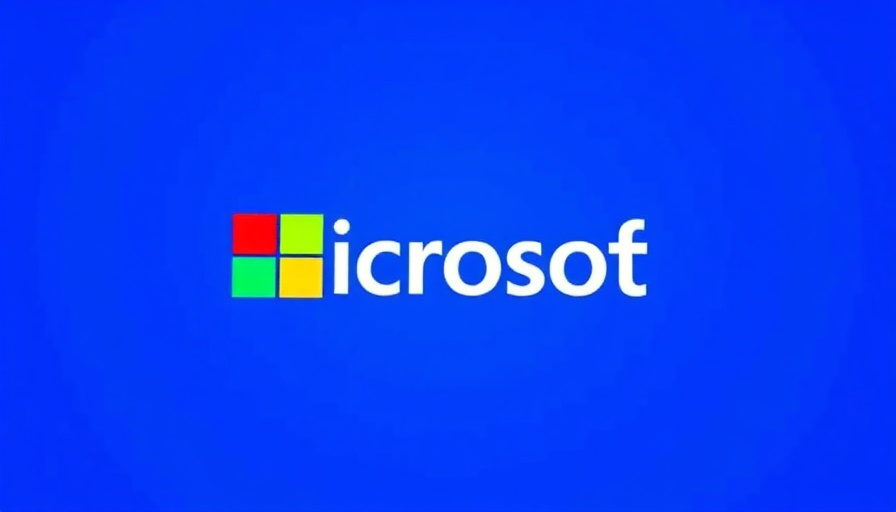
The AI Future: Microsoft at the Crossroads
As Microsoft navigates the unpredictable waters of the stock market, its remarkable investment in artificial intelligence (AI) is catching the eyes of inquisitive investors. Although its stock has plateaued near a six-month low, there's a surge of innovation bubbling beneath the surface, led by strategic partnerships and an unwavering financial foundation.
Investment Trends in AI and Microsoft's Place
Microsoft's commitment to AI is not just a trend; it’s a deliberate move to strengthen its position in the market. Recently, the company announced an ambitious plan to invest $80 billion in AI and cloud applications, primarily focusing on developing data centers capable of handling advanced AI workloads. Brad Smith, Microsoft's Vice Chair and President, outlined that more than half of this hefty investment will occur in the United States.
This substantial capital infusion is indicative of a broader strategy aimed at maintaining the US's competitive edge in the global AI arena. As countries like China ramp up their investments in AI, Microsoft is positioning itself as a sustainable option amidst increasing international competition.
Partnerships That Drive Innovation
Central to Microsoft's AI strategy is its partnership with OpenAI, which has significantly enhanced its Azure cloud services. The collaboration is a strong pillar in Microsoft's AI infrastructure, enabling its various products—from Microsoft 365 to GitHub—to integrate advanced AI features seamlessly. This symbiotic relationship exemplifies how private sector innovation can spur technological advances benefiting multiple sectors.
While companies like Nvidia enjoy robust stock performances due to their singular focus on AI hardware, Microsoft’s approach marries software and cloud computing with AI, creating a diversified growth avenue that cannot be overlooked. This intertwining of services provides a versatile platform that can adapt to emerging trends.
The Road Ahead: Predictions & Potential
The AI landscape is brimming with potential, and Microsoft’s trajectory keeps investors intrigued. The expected increase in Microsoft's AI-related revenue—as evidenced by a 33% rise in Azure services, largely attributed to AI—paints a promising picture. Such growth not only showcases the company's operational agility but also underscores the viability of its long-term investments in technology.
Moreover, as Brad Smith pointed out, AI is poised to be a General-Purpose Technology (GPT), akin to electricity—one that could dramatically transform not just technology but entire industries. Furthermore, as Microsoft continues to allocate funds toward workforce training in AI skills, it’s paving the way for a new generation of skilled professionals, thus expanding the ecosystem of AI developers and users.
Addressing Concerns: Fiscal Responsibility Amidst Exuberance
Despite the overwhelming excitement surrounding these developments, some analysts express concerns regarding Microsoft's heavy spending plans. However, the company's robust financial standing—characterized by substantial cash reserves and manageable debt—injects confidence into its long-term strategy. By investing thoughtfully rather than recklessly, Microsoft appears set to navigate this period of innovation while maintaining fiscal health.
Final Thoughts: Embracing the AI Evolution
In conclusion, Microsoft is not in the midst of reinvention but rejuvenation, wielding both growth potential and sound value in its quest to lead in the multifaceted AI landscape. For investors looking for a stable yet dynamic opportunity among the Dow's offerings, Microsoft shines as an attractive prospect. As always, prudence will be crucial; understanding the implications of such massive investments and their potential returns may well define the next chapter of this technological giant.
Are you ready to engage with the evolving AI landscape? Explore how Microsoft's strategic endeavors hold the key to future investments and potential growth opportunities.
 Add Row
Add Row  Add
Add 




 Add Row
Add Row  Add
Add 

Write A Comment